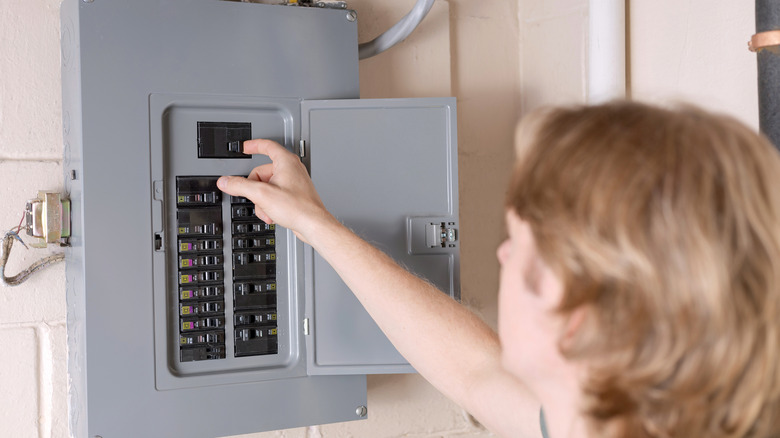The One Question To Ask Before Buying An Induction Stove
Induction stoves are amazing. They have a lot of features that you won't see in standard electric or gas models. Among them: instant heat, faster cooking, instant off, a flat surface, energy efficiency, no hot burners to burn your hands or hot pads on, no more electric coils, and no more exposure to the toxic chemicals emitted when cooking with gas. But before you head to the nearest appliance center, you'll need to answer one major question: Will your home's electrical wiring support an induction stove? Depending on the age of your home, you could require an upgrade to your electrical panel and some rewiring of your home's circuits to support the needs of your new induction stove.
Some battery-powered induction stoves allow you to use a standard 120-volt outlet on a 15-amp circuit, but most induction stoves require 240-volt outlets and 40 to 50 amps. If you already cook with a standard electric model, you likely have a 240-volt outlet behind your stove. If you use gas, you may need new wiring into your kitchen to supply those 240 volts. Depending on the age of your house, among other factors, you may need new wiring to supply those 40 to 50 amps, even if you already have a 240-volt outlet for your stove. If you live in a home built since 1990, you should have all the amperage you need: between 100 to 200 amps. If your home was built around or before the 1950s, it might have 60 amps. Recently built homes, designed for multiple appliances, electric vehicle chargers, water heaters, A/C, heat pumps, and other electrical devices, can have up to 400 amps.
Do you have the power needed for an induction stove?
To determine the amperage of your home, you can check the label on the main breaker on your main electrical panel (not a subpanel). This information is usually found at the top or bottom of the panel. Once you know the amperage of your home's electrical system, you can calculate if you have sufficient power to install an induction stove. Induction stoves are rated by how many watts they use, ranging from single-burner stoves using 800 watts to full-size stoves requiring 5,000 to 7,200 watts. Watts = Volts x Amps, so if you have a 240-volt outlet already installed behind your stove, a 3,000-watt induction stove plugged into a 240-volt outlet will draw 12.5 amps, a 4,000-watt stove will draw 16.7 amps, while a 5,000-watt stove will draw 20.8 amps. You're thinking, "Well, my home is wired for 40 amps, so no problem." That's fine if cooking on your stove is the only thing drawing power at the time. To factor in all the other appliances and devices also drawing power while you're cooking, it's best to consult a licensed electrician to make sure you're not overtaxing your wiring, which can be a fire hazard.
Adding the cost of upgrading your home's wiring to the cost of the induction stove itself can lead to some sticker shock, but if you act soon, you may qualify for the federal tax credits that promote energy-efficient stoves and panel upgrades. They expire at the end of 2025. Some states also provide government incentives for installing an induction stove. Fortunately, induction stoves are three times more efficient than gas stoves, so the switch to an induction stove may pay for itself in the long run, including boosting your home's value by 2% or more.

